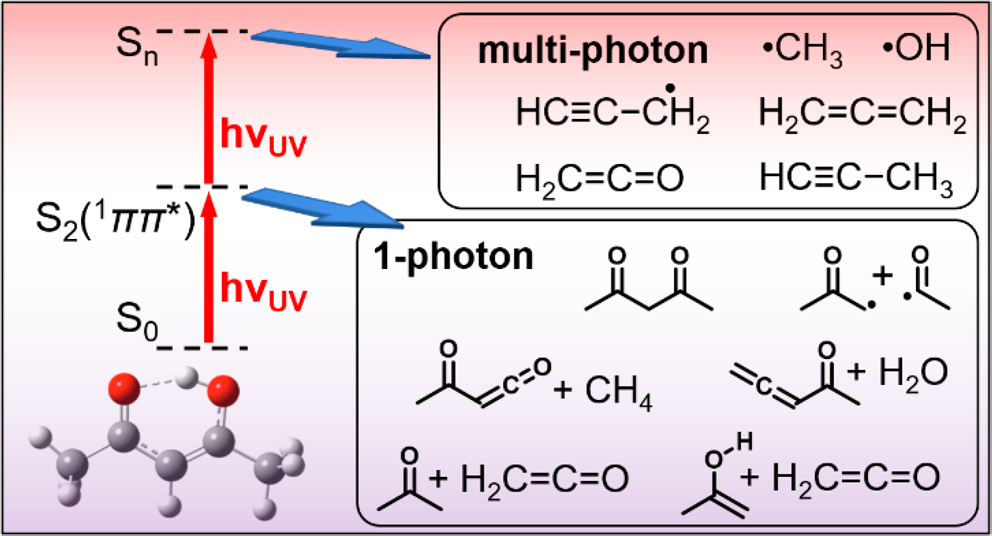When molecules absorb visible or ultraviolet light, they are promoted to an excited state in which the electrons of the molecule occupy different orbitals. This process is critical not only to life on Earth (e.g., photosynthesis), but also to human interactions (e.g., vision). We seek to understand the fundamental details of how this electronic excitation couples to nuclear coordinates (the bond lengths and angles in a molecule) to test and refine quantum mechanical models of nature. CRF researchers employ three main approaches to probe these dynamics:
- Ultrafast pump-probe spectroscopy to follow short time dynamics
- Velocity map imaging to probe quantum-state resolved energy deposition
- Multiplexed photoionization mass spectrometry and PEPICO (to provide a universal view of final states and measure isomer-resolved branching ratios)
The figure below shows an example of the photodissociation of acetylacetone, a molecule that has characteristics of ketones, enols, and polyenes. Its photochemistry is much richer than previously assumed and shows evidence of bond breaking and isomerization on both the excited and ground electronic states.

Key Contributions
- Discovered first example of Roaming Dynamics beyond formaldehyde
- Probed alignment of molecules during dissociation of H2 in intense laser fields
Partners
- Balint Sztaray, University of the Pacific
- Andras Bodi, Paul Scherer Institute, Switzerland
- Patrick Hemberger, Paul Scherer Institute, Switzerland
- Scott Kable, University of New South Wales
PIs: Krupa Ramasesha, Laura McCaslin, David Chandler, David Osborn, Lenny Sheps, Judit Zador